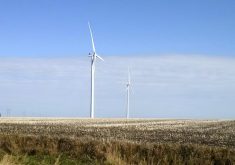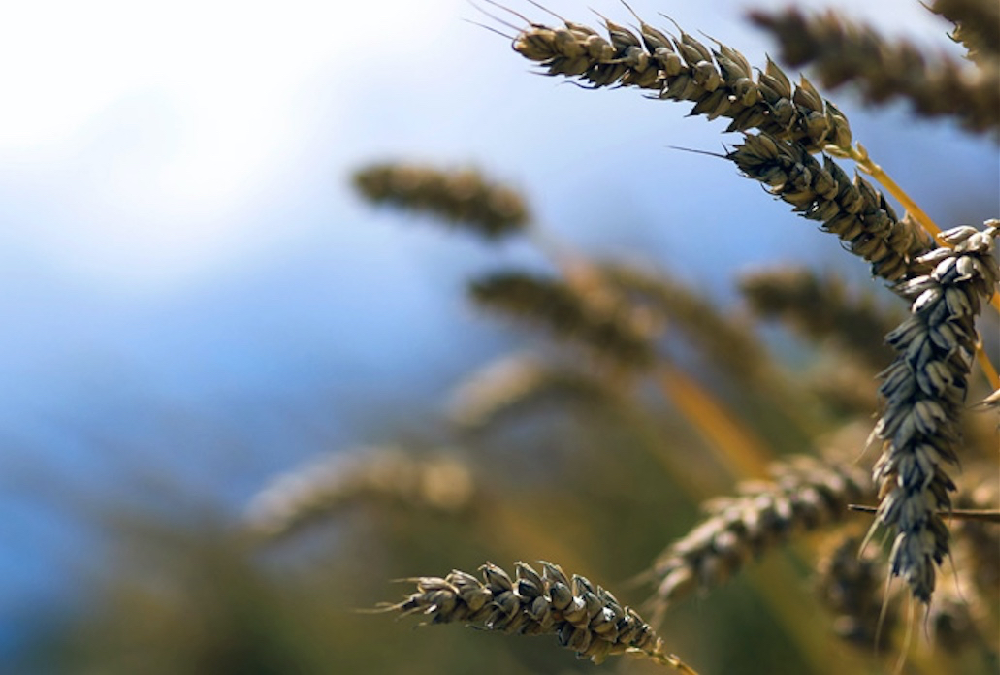Robert Baerg was having coffee with a neighbour one rainy harvest about 15 years ago when they got to talking about their old grain dryer.
It was a real headache, that dryer — chewing through horsepower to dry tough grain far too slowly, and then they still had to cool it. It took both neighbours to keep the thing running, and when the controls started going on it, they decided it was more work than it was worth.
At the end of a particularly wet fall, they hauled that old dryer out back and put it out of its misery. Back-to-back years of dry weather meant they never replaced it. They didn’t really need to, and besides, grain dryers don’t come cheap.
Read Also

Farming Smarter receives financial boost from Alberta government for potato research
Farming Smarter near Lethbridge got a boost to its research equipment, thanks to the Alberta government’s increase in funding for research associations.
Then the rains came again.
“That wet harvest, we started to brainstorm how we could dry our grain without going back to those days,” said Baerg, who farms near Rosemary.
Baerg had some old irrigation pipes sitting around, and knowing how hot they would get in the sun, he had a flash of inspiration.
“I said, ‘I’ve got some old pipes — what if we drew air through them and used the sun to heat it up?’”
So Baerg, a carpenter by trade, built a prototype of 30-foot aluminum pipes lying side by side two pipes long and 10 pipes wide (20 pipes total), and hooked it up to the fan and a single bin.
“We dried one bin of grain like that, and I thought, ‘Whoa, this thing works pretty good,’” said Baerg. “So then I built the manifold and put it to two bins, and it still worked.”
But he knew he needed a more permanent solution if he wanted to add more bins — one of the key ways he makes money off his two quarters.
“We don’t farm a lot of acres, but we do have a lot of storage,” said Baerg, who now has about 20,000 bushels of storage between his hopper bottom and flat bottom bins.
“There are times when I might not sell all my crop in one particular year. Especially with our canola and wheat, we’ll sometimes hold it over for a year if the prices aren’t good.
“I’ve put a lot of effort into bins that will store grain safely.”
Better harvest logistics
So Baerg bought a bunch of old seven-inch irrigation pipe — “the cheapest (he) could get” — and built a 90-pipe bed (30 pipes wide by three pipes long) that went into a new manifold.
“It doesn’t look sophisticated, but it works,” said Baerg. “And not counting the fan, I might have spent $3,000 on materials.”
The manifold is “essentially just a big, long box” that supplies warmer — and therefore drier — air to the fan. The fan draws the air, moving it slowly through the pipes, where it heats as it’s going through. Then the fan pushes air into a long wooden tube that’s connected to every bin. Each bin opening has a sliding door that he can open and close to control which bin gets dried air — without having to move anything around.
“I’ve moved these fans by hand and it’s not easy,” said Baerg. “The way the system works, I never have to move a fan. I just have to open and close doors.”
Now, the first thing Baerg does every harvest is cycle night air through the bins so they’re cool when the grain is unloaded. Then, he begins drying his wettest grain first.
“Once you start drying, you don’t quit. I run the fan day and night,” he said. “We’re putting hot air through it during the day, and that does the drying, and then at night, it cools again.”
On sunny days, the air going through the pipes gains about 15 C, but even on cloudy days or the cooler days of fall and winter, he’s able to hit about a 7 C increase.
“As you get into overcast days or fall and winter, the sun isn’t as powerful, so we don’t get as big a drying effect. But it still works,” he said. “It does take time. If we have really good drying days, we can get our small bin done in three days. The bigger bins take longer. So sometimes we have to be patient.”
That gives him some breathing room in his harvest logistics.
“This is a way I can control the weather a little bit. I sleep better when the crop’s in the bin, not in the field,” he said. “You never gain yield in the field — the crop isn’t going to get better in the fall, but it can get worse if the conditions aren’t right. It’s always a risk, so I combine on the tough side.
“Drying this way, I can jump the gun. I can get in there early knowing that I won’t get in trouble. It gives me that freedom.”
The crop tends to grade higher, too.
“With wheat, we often get a No. 1, versus someone who leaves it out in the field a little longer and faces bleaching or sprouting or frost damage.”
The dryer isn’t needed every year, but in two of the last 10 harvests, Baerg has dried every bushel.
“There were a couple of years we didn’t combine one dry bushel,” he said. “It was all tough, and some of it was nearing 20 per cent. And we got it all dry.”
Costs of grain drying
The system is not without its drawbacks, he added.
“Whenever we have a wet harvest, I’ve got guys coming by and looking at the system, but nobody I know has done anything about it because it’s a lot of work to set up,” he said.
“You can’t just go and buy it. You have to build the system, and that does take awhile. I didn’t build it all at once. The bed was pretty easy to set up, and then with the first manifold, I probably put a week into building it.”
Baerg suspects the system itself isn’t as efficient as it could be. The pressure tube connecting the bins to the manifold is made of treated wood and leaks a little air. And because he had to build the tube with some flex to it — “grain in the bin does do some shifting” — air leaks out where the wooden tubes are connected by more flexible metal ducts.
“You’re always going to have leakage there, but you have to accept that. If you make it too rigid, you’ll tear things apart.”
Last month, Baerg signed on to participate in a new grain-drying study being undertaken by Alberta’s crop commissions.
“There has been an increase in excess moisture conditions over the past several years, so farmers are having to dry grain more often to improve the quality and storage capability,” project lead Shannon Sereda said in a recent interview.
“We want to help farmers better understand how they can improve the costs of their conditioning operation.”
Even though the cost of Baerg’s system was minimal, he still relies on electricity to run his fans — an added expense he hasn’t been able to quantify.
“We notice electricity is higher when we’re drying grain, but that’s hopefully what the project will tell us,” he said.
A benchmarking study done by Team Alberta estimates that, last year, the fuel needed for grain drying in Alberta cost farmers between $25 million and $35 million. And for systems like Baerg’s, which use natural air-drying with supplemental heat (albeit from the sun), the typical cost to dry grain can range between six to 10 cents per bushel.
That’s lower than the 20- to 30-cent-per-bushel costs of heated air-drying, but natural air-drying systems also take longer.
“I’ll be running my fans longer than people who are drying with natural gas,” said Baerg.
“So I think it will be interesting to compare this system and see what energy costs there are.”
Grain conditioning study
That’s ultimately the goal of the three-year study, Sereda said in April.
“We don’t have a good read on how prominent conditioning is in the province and what kind of systems there are,” she said. “So through this study, we’re hoping to evaluate the energy usage and efficiency of different types of on-farm grain conditioning systems.”
Right now, the research team — which includes the Prairie Agricultural Machinery Institute and 3D Energy — is looking for 40 farmers across Alberta who operate one or more grain conditioning systems. Once accepted to the project, participants can expect a three-year commitment working closely with the project team to monitor their grain conditioning activities and energy use.
All data will be aggregated and remain confidential, although participants will receive individual reports on their system and expert recommendations on how to make the most of their grain conditioning systems.
“We’re providing something tangible that farmers can use to improve the profitability of their operation,” said Sereda.
And for Baerg, that’s the real value of this study and the primary reason he volunteered.
“I don’t even know if I’m being efficient. I think I am, but I don’t know,” said Baerg.
“The system works, but how well it works, I have nothing to compare it to. So I’m very interested in seeing the results.”
To volunteer for the study, go to www.albertawheat.ca or contact Sereda at 403-219-6263 or [email protected].















